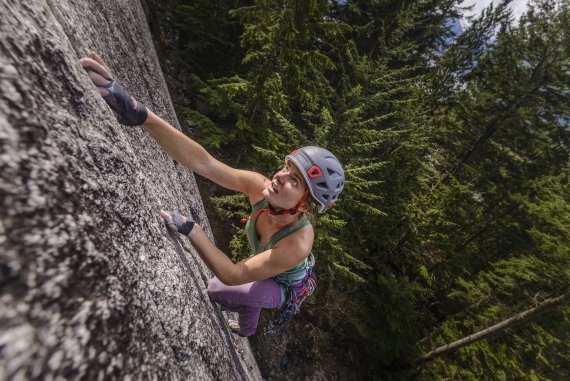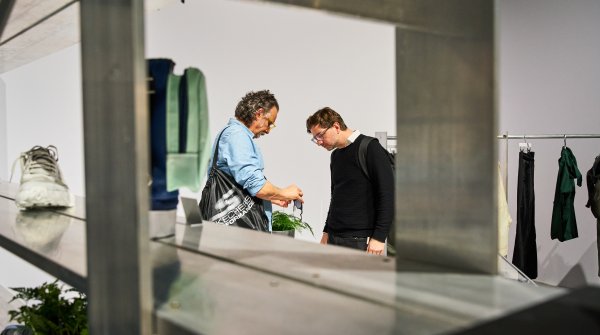
The outdoor industry is still on a solid growth course, as the figures from EOG member survey indicates. This is from the mid-year 2018 survey, which about a fifth of members were able to complete in the timescale for OutDoor summer trade show.
Over autumn/winter of 2017/2018, 73 percent say that sales were better or much better than expected. In the spring/summer of 2018, 56 percent still said this. This information is extremely important for companies and retailers when it comes to correctly planning future business development, production, and orders. The additional information provided by the members also helps in this process.
Publicly reported information also backs up what the EOG survey shows. For example, Johnson Outdoors increased its operating profits by a solid 29 percent year-on-year last quarter. Thule also reported double-digit increases in profits (10.7 percent) and sales (10.2 percent) in the last quarter to date.
The comments on the first half of 2018 made by the EOG, in addition to the business developments, include a “solid market situation,” “positive market expectations,” “rising pre-order figures,” and “optimism on the part of customers.” This trend is being driven by “strong products and new innovations,” and the trail running sector in particular is brought up.
The outdoor brands cite the price pressure from the online sector and the “direct jump from winter to summer products” due to the long winter as challenges for business development in spring/summer. This new, more detailed data from the EOG from this year is supporting the positive trend of the outdoor industry the previous year.
There, the harsher winter had contributed to considerable growth in 2017. After two more difficult winter seasons, The State of Trade 2017 research found the total value of the outdoor market rose by 7.2 percent.
"After two slower years, it was some solid growth. The first figures for 2018 are also painting a positive picture for the current development of the outdoor industry, as well," says Pauline Shepherd, Head of Market Research at the EOG, in an ISPO interview.
OutDoor by ISPO: The launch conference in pictures
Over the last few years the EOG has worked hard to improve market data and looked at a number of options with specialist research companies. This includes how they might automate the data collection of both brand and retail sales using secure systems. It is also important to note that any figures collected are always done so on an anonymous basis and reported and aggregated. This means the identity of any brand or retailer is protected and can never be linked back to the data that is collected.
“Data is a key issue for our members, especially in times of digitalization. This is especially important for smaller, niche companies that don’t have much of a budget for market research,” says Shepherd. Even the EOG doesn’t have millions available for the data evaluation, naturally. It can only use its membership fees. That makes it all the more important to continuously improve the process of data collection in the industry over the years.
In the meantime, there’s an online research tool where each member can enter their data from the previous year manually via a secure access. Almost 80 percent of the outdoor brands active in Europe are now participating, so the results are already an excellent source of information.
That’s why EOG wants to become even better and more up-to-date for its members when it comes to market research. Shepherd: “Automatic data collection via a direct interface with the companies would be ideal.” In the future, for example, there could maybe be quarterly or even monthly trend reports instead of annual reports. It’s unclear whether all members would participate, however.
And even closer to real time would be the recording of “point of sale” figures, as the annual “state of trade report” has so far been fed exclusively from the brands’ delivery figures. That’s why the EOG opened its doors to retailers a few years ago, of whom about 15 are already supplying their figures to the umbrella organization of the European outdoor industry in a pilot project.
"After all, the boundaries between brands and retailers are becoming increasingly blurred. In addition, the boundaries between outdoor and fashion are becoming blurred. The way customers shop today is changing at a rapid pace," says Shepherd.
In the outdoor industry in times of e-commerce and digitalization, this makes it all the more important to have reliable data as soon as possible. It’s the only way companies and retailers can recognize new trends in good time, such as the increased use of backpacks on the way to work or the spread of the smart-casual look in the professional environment.
Shepherd: “Of course, there’s also a lot of competition in the outdoor industry, but everyone is in the same boat. In the future, we’re going to need much more comprehensive and timely data analysis to promote the positive development of the outdoor industry.”

 Sports BusinessSki Mountaineering Goes Olympic: What Milano-Cortina 2026 Means
Sports BusinessSki Mountaineering Goes Olympic: What Milano-Cortina 2026 Means
- ISPO awards
- Mountain sports
- Bike
- Design
- Retail
- Fitness
- Health
- ISPO Job Market
- ISPO Munich
- ISPO Shanghai
- Running
- Brands
- Sustainability
- Olympia
- OutDoor
- Promotion
- Sports Business
- ISPO Textrends
- Triathlon
- Water sports
- Winter sports
- eSports
- SportsTech
- OutDoor by ISPO
- Heroes
- Transformation
- Sport Fashion
- Urban Culture
- Challenges of a CEO
- Trade fairs
- Sports
- Find the Balance
- Product reviews
- Newsletter Exclusive Area
- Magazine





























